The Ringling News
20 December 2022
Five Facts about Rubens at The Ringling
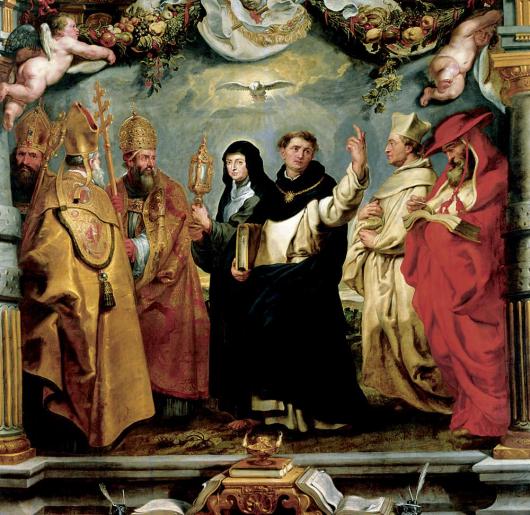
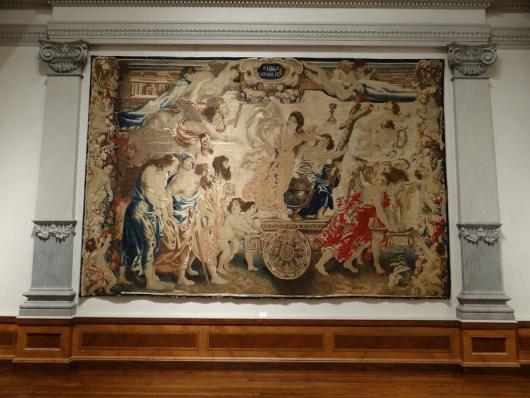
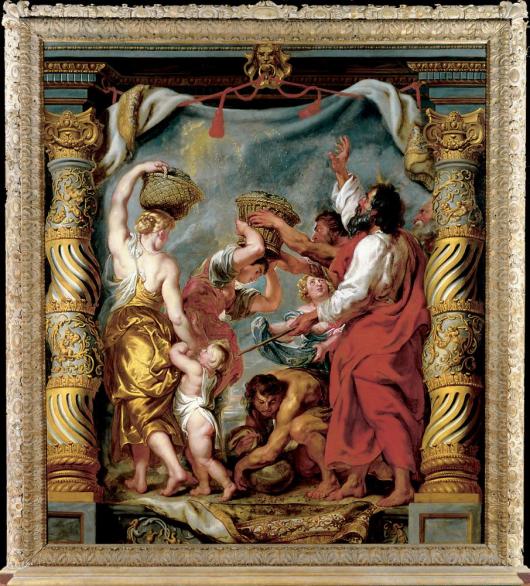
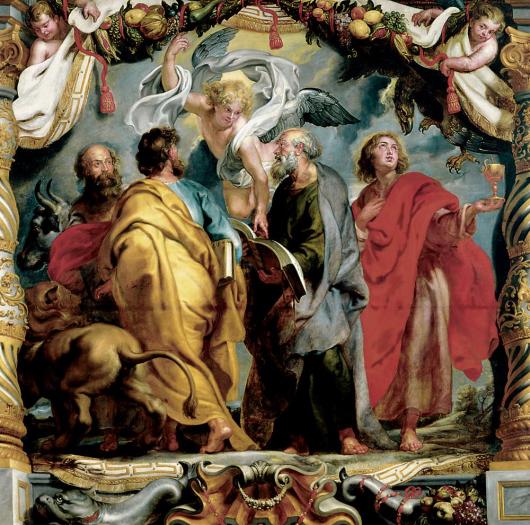
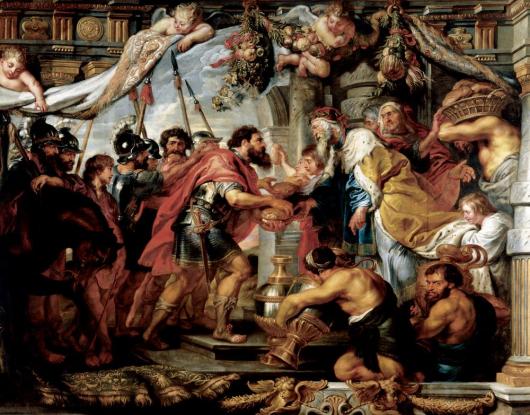
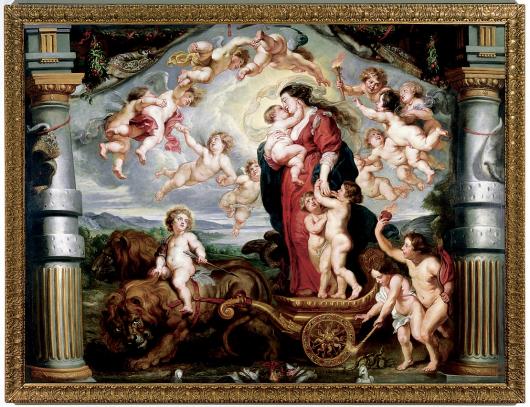
The Ringling’s Triumph of the Eucharist paintings—five immense canvases that greet visitors upon entering the galleries of the Museum of Art—are breathtakingly impressive and wow visitors from all over the world every day. However, the history of these works is equally fascinating! Here are five facts about this series by the Flemish master Peter Paul Rubens (1577-1640) and his workshop.
Peter Paul Rubens (Flemish, 1577 – 1640), The Defenders of the Eucharist, c. 1625, Oil on canvas, 171 x 175 in. (434.3 x 444.5 cm). Bequest of John Ringling, 1936. SN214
1. They were made for a Spanish Princess, who ruled the Spanish Netherlands
Rubens was the court painter and adviser to the Spanish princess and ruler of the Spanish Netherlands, Isabella Clara Eugenia, the daughter of King Philip II of Spain. In 1625, she asked him to produce the designs for a set of 20 tapestries to be given to a convent in Madrid. Isabella Clara Eugenia had special family ties to this convent and hoped to retire there. The Ringling paintings reproduce five of the tapestry designs Rubens created for Isabella. In the painting shown above, Rubens portrayed Isabella Clara Eugenia as Saint Clare.
Designed by Peter Paul Rubens (Flemish, 1577 – 1640), woven by Jan Frans van den Hecke (active 1660-1695), Fides Catholica, Wool and silk, 162 x 243 3/4 in. (411.5 x 619.1 cm), Bequest of John Ringling, 1936, SN1024
2. The tapestries had a special role in the convent:
They were likely displayed in the convent church on special feast days or holidays. All twenty were made to celebrate Catholicism, and most directly relate to the practice of the Eucharist. In the Catholic faith, the Eucharist is the sacrament of the Holy Communion when the bread and wine become the body and blood of Christ during mass.
Peter Paul Rubens (Flemish, 1577 – 1640), The Gathering of the Manna, c. 1625, Oil on canvas, 192 x 162 in. (487.7 x 411.5 cm). Bequest of John Ringling, 1936. SN211
3. These are not cartoons:
For many years, it was believed that the paintings in the Ringling collection were cartoons—full-sized, color models to serve as a blueprint for the tapestry-making process. However, we no longer believe that our paintings are cartoons. If they had been made to be used on a high-warp loom, the painted compositions would face in the same direction as the tapestries—but they are in reverse. And if they had been made for a low-warp loom, it would be appropriate to have the composition in reverse, but the paintings would have been cut into strips and fed into the loom. Our paintings have clearly never been cut in this way. Additionally, the fact that they are oil on canvas indicates that they are not cartoons, which were typically made on paper with watercolor.
Peter Paul Rubens (Flemish, 1577 – 1640), The Four Evangelists, c. 1625, Oil on canvas, 173 x 176 in. (439.4 x 447 cm). Bequest of John Ringling, 1936. SN213
4.The paintings’ purpose remains unknown:
After the paintings’ completion, they were moved to Isabella Clara Eugenia’s palace in Brussels. Perhaps she wanted a visual record of her gift to the convent. We don’t know exactly how many paintings were originally made for her (perhaps there were 20, one for each tapestry, or perhaps only the 11 largest tapestries were copied in paint).
Peter Paul Rubens (Flemish, 1577 – 1640), The Meeting of Abraham and Melchizedek, c. 1625, Oil on canvas, 175 1/4 x 224 3/4 in. (445.1 x 570.9 cm). Bequest of John Ringling, 1936. SN212
5.Today, there are only seven paintings:
Five are at The Ringling, and two are in the collection of the Louvre in Paris. The others are believed to have been destroyed in a palace fire.
Peter Paul Rubens (Flemish, 1577 – 1640), The Triumph of Divine Love, c. 1625, Oil on canvas, 152 x 204 in. (386.1 x 518.2 cm). Museum purchase, 1980. SN977